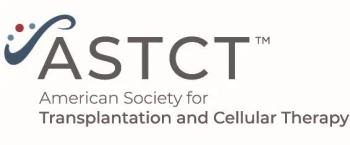
Olutasidenib Maintenance Shows Clinically Meaningful Activity in IDH1-Mutated AML
Single-agent olutasidenib maintenance demonstrated clinically meaningful activity in patients with IDH1-mutated acute myeloid leukemia.
Results from a phase 2 trial (NCT02719574) shared at the 2025 EHA Congress showed that olutasidenib (Rezlidhia) demonstrated sustained relapse-free survival (RFS) as maintenance therapy for patients with IDH1-mutated acute myeloid leukemia (AML) who achieved complete remission (CR) or CR with incomplete hematologic recovery (CRi) following induction therapy.
Among the 18 patients enrolled, the median treatment duration with olutasidenib was 19.6 months (range, 9.5-42.3), and the median follow-up was 36.3 months (range, 27.3-41.7). Two patients with prior venetoclax (Venclexta) exposure who entered the study in CRi converted to CR or CR with partial hematologic recovery (CRh) during treatment.
Findings showed the 4-month RFS rate was 83%. The 12- and 24-month RFS (EFS) rates were 71% (95% CI, 44%-87%) and 48% (95% CIm 23%-68%), respectively. Additionally, the respective 12- and 24-month overall survival (OS) rates were 89% (95% CI, 62%-97%) and 89% (95% CI, 62%-97%).
“Olutasidenib as a single agent demonstrated clinically meaningful activity as a switch maintenance strategy in a subset of [patients with] AML with CR/CRi and persistent minimal residual disease [of no more than] 0.01% after prior therapy,” lead study investigator Andrew Wei, MBBS, PhD, and colleagues wrote in a poster presentation of the data. “This analysis supports the potential benefit of switching to olutasidenib upon response to therapy, with the goal of prolonging remission.”
In December 2022,
Maintenance Study Design
Eligible patients for the maintenance cohort needed to have a documented morphologic CR/CRi and measurable MRD, defined as bone marrow IDH1 mutation levels no higher than 0.01%.1
Patients received olutasidenib at a dose of 150 mg orally twice daily in continuous 28-day cycles. Treatment continues until disease relapse, unacceptable toxicity, initiation of alternative therapy, or withdrawal of consent.
The primary end point was the 4-month RFS rate. Secondary end points include OS and event-free survival (EFS), with EFS defined as the time from first study dose to documented relapse, death, treatment failure, or the initiation of new therapy.
To support exploratory biomarker analyses, MRD assessments are conducted using IDH1 variant allele frequency in bone marrow. Time-to-event end points were estimated using the Kaplan-Meier method.
Baseline Patient Characteristics
The median age of the 18 enrolled patients was 68.5 years (range, 38-77), and one-third of participants were female. Most patients had an ECOG performance status of 1 (56%), with the remaining 44% classified as 0.
The majority of patients (94%) had primary de novo AML; 1 patient (6%) had secondary AML. Regarding IDH1 mutation status, the most common variant was R132C (56%), followed by R132H (33%), and R132G/S (11%).
The median bone marrow blast percentage at baseline was 2% (range, 1%-5%). Co-mutation burden was generally low, with 50% of patients harboring 1 to 3 co-mutations, and an additional 11% having 4 to 7 co-mutations. Mutation data were unavailable for 39% of patients.
Thirty-nine percent of patients received two prior treatment regimens, and 50% received at least 3 prior lines of therapy. Common prior therapies included cytarabine (94%), daunorubicin/idarubicin (78%), hypomethylating agents (28%), and venetoclax (11%). Notably, 11% of patients had received hematopoietic stem cell transplantation, and 11% had been treated previously with olutasidenib.
Safety Analysis
“The safety profile in the maintenance cohort was consistent with other cohorts in the study, and AEs were anticipated and manageable,” study authors wrote.
In the study, all participants experienced at least one treatment-emergent adverse effect (TEAE). Serious TEAEs were reported in 33% of patients, with grade 3 or 4 toxicities including febrile neutropenia, diarrhea, acute hepatitis, device-related infection, fall, increased hepatic enzymes, increased lipase, and pyoderma gangrenosum—each occurring in 1 patient.
Grade 3 or 4 TEAEs overall were observed in 61% of patients (11/18). Importantly, no TEAEs or serious TEAEs resulted in treatment discontinuation of olutasidenib.
The most commonly reported any-grade TEAEs included fatigue (33%), headache (33%), nausea (28%), constipation (22%), decreased neutrophil count (22%), and back pain (22%).
References
- Wei AH, Jonas BA, Seiter K, et al. Olutasidenib as maintenance therapy after treatment response in mutated IDH1 acute myeloid leukemia. Presented at: EHA Congress; June 12-15, 2025; Milan, Italy. Abstract PF530.
- FDA approves olutasidenib for relapsed or refractory acute myeloid leukemia with a susceptible IDH1 mutation. FDA. December 1, 2022. Accessed June 13, 2025. https://www.fda.gov/drugs/resources-information-approved-drugs/fda-approves-olutasidenib-relapsed-or-refractory-acute-myeloid-leukemia-susceptible-idh1-mutation
Newsletter
Stay up to date on recent advances in the multidisciplinary approach to cancer.





















































































